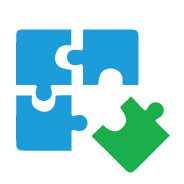Q. What are some of the future challenges where intellect and agility would particularly help? Could you share with us some examples?
The complexity of business challenges, the increasing pace of change and the emergence of new skills and technology are a few examples of future challenges in which a critical talent with high intellect and agility would benefit.
Q. What are the most crucial and futuristic competencies that need to be assigned more weightage when identifying our high-potentials?
All the competencies included in the Mercer| Mettl frameworks are critical to assessing high-potentials. However, the drive to excel and learning agility are most in-demand in all situations. Once identified, a HiPo employee could be trained in leadership and decision-making skills.
Q. Since high-potential identification is a critical talent management process, should organizations undertake it only through a more comprehensive process such as ACDCs or are there any other employable measures?
We strongly suggest using scientific tools to identify the high-potential employee pool. A company may decide to use a battery of assessment tools or conduct offline or online ACDCs based on its program objectives.
Q. Is once a HiPo always a HiPo?
Once identified as a high-potential employee does not mean the individual is entitled to special treatment. The ‘high-potential’ tag would not work if the individual fails to perform or is unable to handle the challenges concerning future roles.
Q. If we have 100 managers, shall we place them all in ACDCs, or should there be a process before shortlisting a HiPo talent?
It is always advisable to shortlist individuals for high-potential assessment and development centers (ACDC). Employees should be identified and nominated by their managers, who are familiar with their performance, abilities and career aspirations. Nominations often include current and past performance evaluations, careers, educational history and reasons for the decision. The list of nominated candidates should be reviewed by a talent board consisting of members from the HR, senior leadership team and senior managers. The board should shortlist the group of employees to undergo ACDC for the final HiPo assessment.
Q. What is the potential impact on the employees who do not make it to the list of HiPos? How to arrest the feeling of despondency?
High-potential employees are a company’s top talent, and everyone cannot be on the list. However, candidates who are nominated but cannot get shortlisted in the final HiPo pool after the assessment should be dealt with caution. The HR/line manager needs to conduct a counseling session on their existing areas of shortcomings and possible measures to improve upon them.
Q. How should we screen our employees to place them in a HiPo program when it is practically impossible to enroll everyone?
High-potential employees constitute the top 3-5 percent of a company’s talent, so the first step of the program is to define the potentials and ask for nominations. Employees should be identified and nominated by their managers, who are familiar with their performance, abilities and career aspirations. Nominations often include current and past performance evaluations, career, educational history and reasons for the nomination. The list of nominated candidates should be reviewed by a talent board consisting of members from the HR, senior leadership team and senior managers. The board should shortlist the employees to undergo ACDC for the final high-potential assessment.
Q. Every individual has a different learning preference and learning style. How can organizations consider individual differences while designing HiPo development programs?
Indeed, a generic development program cannot be effective in developing high-potential employees. Once identified, HiPo employees should be mapped with the critical role that they would be handling in the future. A customized development plan should be finalized separately for each HiPo employee to future-ready them for their role. Organizations can objectively assess the learning styles and readiness on future competencies, designing individualized developmental programs for the specific HiPo employee.
Q. Do you think HiPo development should be more an individual-centric process and not catered to a group setting?
Indeed, a generic development program cannot be effective in developing high-potential employees. Once identified, HiPos should be mapped with the critical role they would undertake in the future. A customized development plan should be finalized for each HiPo employee separately to prepare them for the future role.
Q. In assessments, especially in ADCs, do you think context-based tools can help better extract candidate behaviors, or too much contextual familiarity may lead to socially desirable answers? Should FMCG individuals be given FMCG contextual tools, or should it be industry-agnostic?
We can use both industry-agnostic and industry-specific tools to recognize high-potential employees. However, it is advised to use industry-agnostic content in AC/ VAC as they would rule out any prior industry-related knowledge, providing equal opportunity to all candidates.
Conversely, if the organization is niche and highly specialized in terms of products or services, it is advised to use industry-specific content in ADCs.
Q. How can we manage employee expectations when taking them through a HiPo program? Often, employees tend to translate such a program to a mechanism that facilitates vertical movement, which is not always possible in a current flat organization?
Usually, it is the case that once employees get identified for the HiPo pool, they expect immediate pay raise, promotion and developmental opportunities. This happens because they are unaware of the objectives of a HiPo program. It is recommended to share the HiPo program’s detailed objectives and other information about the selection and development process. High-potential employees need to know that they would not be eligible for immediate promotions or pay raise once identified. They are now part of a development program where they would be groomed systematically to handle critical roles for the company in the future.
Q. At times, despite structured selection, assessment and development, senior leadership does not make timely decisions on HiPos due to their strong perception. This frustrates HiPo employees. How can the HR deal with this fairly and objectively?
Getting affirmation from senior leadership is the first important step of the high-potential program. HR professionals should involve them in the initial conceptualization and program implementation stage. HR managers should include them, making them a vital stakeholder in this program. This would, in turn, create a positive perception of the program’s efficacy and a sense of accountability for its success.
Q. Should HiPo identification always logically lead to an immediate promotion/ role elevation after the development program? What are the other ways to motivate and engage high-potentials?
They can be involved in critical discussions and invited to quarterly meetings with high-level executives. These can lend them opportunities to discuss their perspectives and offer suggestions to the senior organizational leaders to solve pressing problems.
Q. Does readiness only depend upon the competency level, or are there any other factors that affect the readiness level?
Readiness needs to be assessed adequately based on the experience, knowledge, skills and competencies required for the future role. There are three components of readiness: skills, experience and behavioral competencies related to the next role. Readiness is the gap between the present and the future role that will be taken by high-potential employees.
Q. What is the weightage accorded to the three parts of the assessment – 1) Self 2) Manager and 3) An outsider entity such as Mercer | Mettl’s assessment tool, and what if someone uses all three?
It is advised to collect data to make the final decision on HiPo identification from multiple sources. Ideally, an individual’s and the manager’s recommendations should be given 50% weightage, and the remaining 50% can be accorded to objective assessments.
Q. I would like to know more about some practical illustrations on the identification of high-potential employees at Modern foods.
Click here to know how Mercer | Mettl enabled Modern Foods to build a high-performing sales unit.
Q. Shouldn’t there be clarity about specific roles/ positions in the company wherein these HiPo employees will be inducted before implementing the HiPo identification?
Ideally, critical positions should be broadly identified at the planning stage. It would help the company finalize the scope and objective of the HiPo program in a concise manner.
Q. The assessment center results vs. actual performance data – which one would you choose? If someone has not gone through the assessment center process but is performing well on-the-job, will you still promote him/her?
Since the purpose of HiPo identification is to identify talented performers and expedite their preparation to assume essential roles in the future, including someone in the HiPo pool should be based on a scientific and objective assessment of the potential talent via ADC/structured talent discussions. The objective of the high-potential program is not just promotion but employee development.









 Behavioral Competencies
Behavioral Competencies Cognitive Competencies
Cognitive Competencies Coding Competencies
Coding Competencies Domain Competencies
Domain Competencies






























Would you like to comment?